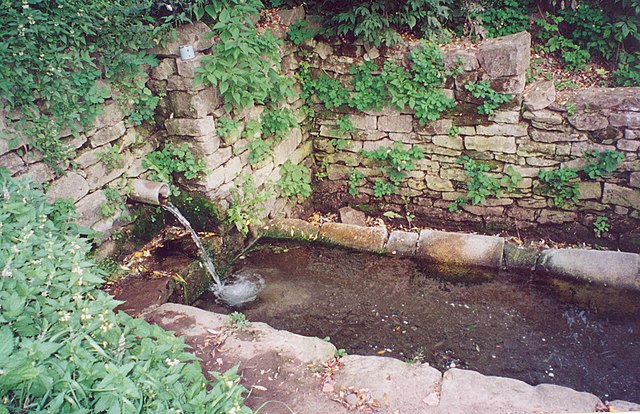Groundwater pollution occurs when pollutants are released to the ground and make their way into groundwater. This type of water pollution can also occur naturally due to the presence of a minor and unwanted constituent, contaminant, or impurity in the groundwater, in which case it is more likely referred to as contamination rather than pollution. Groundwater pollution can occur from on-site sanitation systems, landfill leachate, effluent from wastewater treatment plants, leaking sewers, petrol filling stations, hydraulic fracturing (fracking) or from over application of fertilizers in agriculture. Pollution can also occur from naturally occurring contaminants, such as arsenic or fluoride. Using polluted groundwater causes hazards to public health through poisoning or the spread of disease.
Groundwater pollution in Lusaka, Zambia, where the pit latrine in the background is polluting the shallow well in the foreground with pathogens and nitrate
A traditional housing compound near Herat, Afghanistan, where a shallow water supply well (foreground) is in close proximity to the pit latrine (behind the white greenhouse) leading to contamination of the groundwater
Poor management practices in manure spreading can introduce both pathogens and nutrients (nitrate) in the groundwater system.
Schematic showing that there is a lower risk of groundwater pollution with greater depth of the water well
Groundwater is the water present beneath Earth's surface in rock and soil pore spaces and in the fractures of rock formations. About 30 percent of all readily available freshwater in the world is groundwater. A unit of rock or an unconsolidated deposit is called an aquifer when it can yield a usable quantity of water. The depth at which soil pore spaces or fractures and voids in rock become completely saturated with water is called the water table. Groundwater is recharged from the surface; it may discharge from the surface naturally at springs and seeps, and can form oases or wetlands. Groundwater is also often withdrawn for agricultural, municipal, and industrial use by constructing and operating extraction wells. The study of the distribution and movement of groundwater is hydrogeology, also called groundwater hydrology.
Dzherelo, a common source of drinking water in a Ukrainian village
The entire surface water flow of the Alapaha River near Jennings, Florida, going into a sinkhole leading to the Floridan Aquifer groundwater
Groundwater may be extracted through a water well
Center-pivot irrigated fields in Kansas covering hundreds of square miles watered by the Ogallala Aquifer








